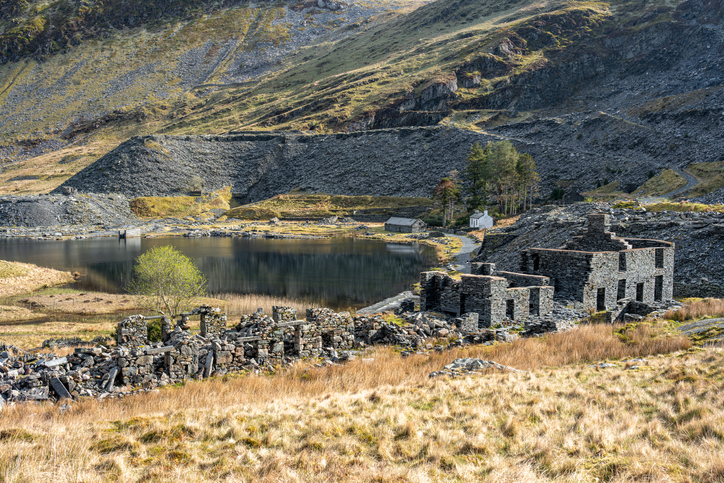Geologically, Slate is a fine-grained metamorphic rock composed of sedimentary or volcanic ash deposits which through metamorphism have been chemically and structurally changed. Slate has two defined lines of breakability – cleavage and grain. These make it possible to split the slate into thin sheets, which can then be cut and shaped into roof slates, as well as many other applications.
The geology of the slate deposit is very important, as it affects the appearance, both colour and texture, and also longevity of the finished roof. Some of the best slates in the world were laid down between 400 – 500million years ago.
Often the word “slate” is used to describe mudstone, limestone and other types of stones which are also used for roofing. These have different properties and processes involved in their make up which can result in them having very different working characteristics.
Slate has been used in building for centuries, for example the quarries in North Wales have been operating, albeit in a smaller scale, since Roman times. With slate being found on the Roman fort at Seqontium Caernarfon – circa 77AD. There is evidence to suggest that slate was quarried and used as early as the 3rd century in the UK, notably in the Roman fort of Segontium in North Wales. However, the slate trade truly flourished during the Industrial Revolution, from around 1760 to 1840. This period of tremendous industrial growth brought significant changes to many sectors and created a high demand for building materials as the population moved to urban areas and construction soared.
Wales became the heart of the slate industry, particularly in the northern region. The Great New Quarry in Dinorwig, which opened in 1787, played a crucial role in meeting the increased demand, growing rapidly and employing thousands of workers. By the late 1800s, over 3,000 men were working at the quarry to ensure the continued supply of slate. Wales accounted for around 80% of the UK’s slate production, with Caernarfonshire as the leading slate-producing area. Slate production reached its peak in 1898, with Wales producing an impressive 485,000 tonnes that year from a workforce of 17,000 people. Even after the Industrial Revolution, the slate industry continued to thrive with production remaining high throughout the 19th century. Some quarries have now been repurposed as tourist attractions, but Welsh slate is still highly regarded for its quality and distinctive appearance.

Many old slate quarries, such as those in the Lake District and Coniston, have become popular destinations for tourists and hikers, while some quarries, like the flooded Hodge Close quarry, attract divers. These historic sites not only represent the industrial heritage of the slate industry but also serve as a reminder of the profound impact that Cumbrian slate had on the UK’s landscape, architecture, and economy.
There are many different producers of good quality slate around the globe – North American Slate, Spanish Slate and Brazilian Slate. Each one of these is producing similar but distinctly different types of slate. If you follow the thumbnails below you can investigate further.
This interactive tool considers key specifications such as shape, material, dimensions, and finishing details to generate a personalised quote tailored to your needs. We offer a wide range of shape options, from classic rectangular designs to sleek, modern curves, all crafted from luxurious, high-grade slate.
This interactive tool considers key specifications such as shape, material, dimensions, and finishing details to generate a personalised quote tailored to your needs. We offer a wide range of shape options, from classic rectangular designs to sleek, modern curves, all crafted from luxurious, high-grade slate.